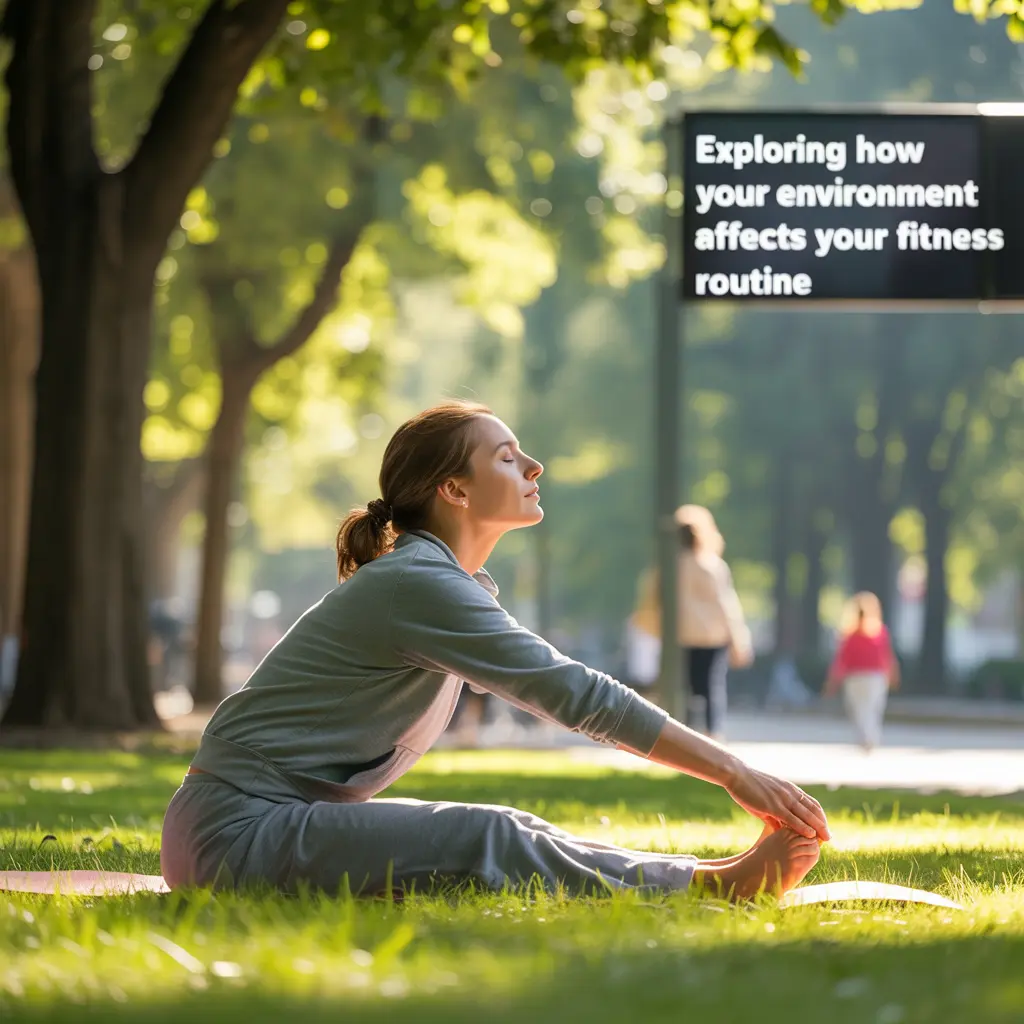
Exploring How Your Environment Affects Your Fitness Routine
Fitness is not just about motivation and goals. Your environment plays a big role in shaping your daily habits, including your fitness routine. Whether you live in a city or a rural area, your surroundings either support or block your ability to stay active.
In this article, we explore how different factors in your environment impact your fitness efforts. From space and safety to air quality and social support, each element matters.
What Does “Environment” Mean in Fitness?
When we talk about environment, we don’t just mean nature. Your fitness environment includes:
-
The space around your home or neighborhood
-
The weather and climate in your region
-
Facilities like gyms, parks, and walking trails
-
Safety, lighting, and cleanliness
-
The people around you, like neighbors, family, or friends
-
Your home layout and available equipment
Each of these influences how easy or hard it is to stay active every day.
Space to Move Freely
Space is a basic need for fitness. If your home is small or cluttered, you may find it hard to work out indoors. People who live in bigger homes or have access to a backyard can exercise more easily.
Example:
If you live in a one-room apartment with low ceilings, it’s hard to jump, stretch, or use workout gear. But someone with a spare room or a garage has more options.
Tip:
Even in small homes, you can clear one corner to create a “mini fitness zone” with a mat, light weights, or a resistance band.
Outdoor Space and Nature Access
Many people enjoy outdoor workouts like running, hiking, or yoga. These workouts require access to safe, clean outdoor spaces.
Good environments include:
-
Parks
-
Jogging trails
-
Beaches
-
Forest paths
If you don’t have access to nature, you may feel stuck indoors, which limits your workout variety.
Tip:
If possible, walk to a nearby park or find a scenic route around your block to stay active.
Weather and Climate
Weather affects how often you exercise outside. People in mild climates tend to exercise more regularly outdoors.
Warm and sunny areas invite walking, jogging, or cycling.
Cold or rainy climates may limit outdoor fitness unless you have indoor options.
Tip:
Adapt to the season. In winter, try indoor workouts. In summer, exercise early in the morning or later in the evening when it’s cooler.
Air Quality
Clean air is essential for healthy exercise, especially for cardio workouts. Polluted air can harm your lungs and reduce your workout performance.
Example:
If you live in a city with heavy traffic or industrial pollution, it’s not safe to run outside daily.
Tip:
Check air quality apps. If pollution is high, exercise indoors with windows closed and an air purifier on.
Noise Levels
Noise can disturb your focus, especially during yoga, meditation, or stretching. Peaceful environments help your mind and body stay calm and engaged.
Tip:
If outside noise bothers you, try noise-canceling headphones or calming music during your routine.
Lighting and Safety
Safety is key. If your neighborhood has poor lighting, broken sidewalks, or crime risks, you may not feel safe walking or jogging.
A safe environment includes:
-
Well-lit streets
-
Clean public areas
-
Low crime rates
-
Visible police or security presence
Tip:
If your area isn’t safe, find a trusted gym or indoor space for workouts.
Access to Fitness Facilities
Having access to fitness centers, sports clubs, or community classes makes it easier to stay consistent.
Big cities often have many options:
-
Gyms
-
Dance or martial arts studios
-
Yoga or Zumba classes
Rural areas may have fewer choices, so people rely more on home workouts or outdoor routines.
Tip:
If you can’t access a gym, follow free online workout videos or apps at home.
Social Environment and Support
Your fitness is also affected by the people around you. Encouragement and shared goals help you stay motivated.
Positive influences include:
-
A friend to walk with
-
A partner who works out with you
-
Family members who support your routine
Negative social environments include:
-
People who mock or discourage you
-
Friends who always choose unhealthy habits
Tip:
Surround yourself with people who respect and support your goals, even online fitness groups can help.
Cultural Attitudes Toward Fitness
Culture shapes how people view exercise. In some cultures, daily activity is a norm. In others, fitness may be seen as a luxury or a waste of time.
Example:
In many Western countries, running or gym culture is popular. In other places, people focus more on walking or manual labor.
Tip:
Choose a fitness style that fits your culture and comfort. You don’t have to follow trends—just stay active in your own way.
Home Environment and Layout
A tidy and organized home can improve your energy and mood. Clutter can make you feel tired or unmotivated.
Tip:
Designate a small area for fitness. Keep your mat, weights, or shoes in one spot so you’re ready to go anytime.
Technology Access
Fitness apps, online classes, and smartwatches all help build better routines. But not everyone has access to this tech.
Tip:
If you don’t have internet access, use printed workout plans or listen to fitness podcasts.
Time and Work Environment
Your job and daily schedule affect your routine too. Long hours, long commutes, or shift work can make it hard to stick to a fitness plan.
Tip:
Find short workouts that fit into your schedule, like 10-minute routines or desk stretches.
How to Improve a Non-Supportive Environment
You don’t need a perfect space to stay fit. Here are ways to adapt:
-
Use what you have – A chair, a staircase, or a wall can all be fitness tools.
-
Stay flexible – If it rains, move your workout indoors. If you’re tired, do a lighter session.
-
Build routines – Make fitness part of your day, like brushing your teeth.
-
Get creative – Dance in your room, walk during calls, or do squats while cooking.
-
Involve others – Invite a friend or family member to join you.
-
Set small goals – Focus on consistency, not perfection.
Conclusion: Your Environment Matters—But You Still Have Power
Your fitness routine is deeply shaped by your environment. Space, air, safety, and social support all affect your ability to stay active. But even in less ideal conditions, you can still move, stretch, and stay strong.
You don’t need expensive gyms or perfect weather. You need a plan that fits your life, your body, and your space. With a few small changes, your current environment can become your personal fitness zone.
Stay consistent. Stay active. And remember, your health journey starts where you live.



